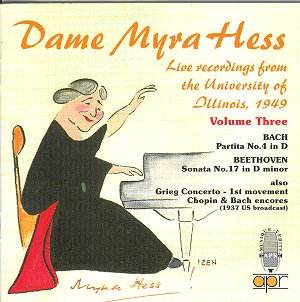 Composer: Simon Dinnigan
Composer: Simon Dinnigan
Works: Luys de Narváez: 22 Diferencias de “Conde Claros”, Canción del Emperador, Diferencias sobre “Guárdame las Vacas”; Johann Sebastian Bach: Violin Sonata No.1, BWV 1001; Agustin Barrios Mangoré: Una Limosna por el Amor de Dios, Julia Florida, Vals, Op.8, No.4; Antonio Lauro: Suite Venezolana; Nikita Koshkin: Usher Waltz, Op.29
Performers: Simon Dinnigan (guitar)
Recording: P3 MUSIC P3M002 [55:53]
Label: P3 Music
The debut album by Simon Dinnigan presents a thoughtful selection of works that span several centuries, reflecting the guitarist’s technical prowess and interpretive depth. Dinnigan, a prominent figure in the contemporary classical guitar scene, has chosen a program that juxtaposes the early polyphonic intricacies of Luys de Narváez with the Baroque elegance of Bach, alongside the rich melodic landscapes of South American composers such as Barrios and Lauro. This broad repertoire offers listeners an opportunity to appreciate both the historical evolution of guitar music and Dinnigan’s exceptional capabilities as a performer.
Dinnigan’s interpretations are marked by a commanding technical facility that is evident from the outset. His rendering of Narváez’s “22 Diferencias de ‘Conde Claros'” exemplifies an understanding of the Renaissance style, characterized by a delicate balance of counterpoint and melodic line. Each variation is approached with a nuanced touch, allowing the distinct characters of the themes to emerge without losing the overall cohesion of the work. The clarity of articulation in the intricate passages demonstrates Dinnigan’s command over the instrument, while the subtle dynamic shading enhances the emotional resonance of this early guitar repertoire.
Turning to Bach’s Violin Sonata No. 1, BWV 1001, Dinnigan opts for a guitar transcription that, while familiar, invites scrutiny. The Adagio unfolds with an expansive lyricism that showcases the instrument’s voice-like qualities. However, the Fugue, a daunting challenge for any performer, reveals a lack of the counterpoint’s intricate interplay that one might expect from more seasoned interpretations. Dinnigan’s approach, though technically sound, occasionally sacrifices the rhythmic vitality essential to Bach’s polyphonic textures. A comparison with recordings by guitarists such as Julian Bream or John Williams illustrates a missed opportunity to delve deeper into the complexities of Bach’s writing, which could elevate the performance beyond mere technical execution.
The selection from Agustin Barrios Mangoré, particularly “Una Limosna por el Amor de Dios,” resonates with emotional depth, and here Dinnigan excels in conveying the poignant yearning inherent in the music. His phrasing is sensitive and lyrical, capturing the essence of Barrios’s romantic idiom. However, the inclusion of “Julia Florida” and “Vals, Op.8, No.4” feels somewhat predictable within the context of guitar recordings, as these pieces are frequently encountered in recital settings. A more adventurous repertoire could have showcased Dinnigan’s abilities more fully and provided listeners with rare gems from the Barrios catalog, as many of his works remain underperformed.
Dinnigan’s interpretation of Antonio Lauro’s Suite Venezolana and Nikita Koshkin’s Usher Waltz, Op.29, offers a vibrant exploration of Latin American and contemporary styles. The rhythmic vitality and cultural authenticity in “Danza Negra” and “Registro” bring a refreshing contrast to the earlier selections. The precise articulation and lively tempos evoke a celebratory spirit, demonstrating Dinnigan’s versatility as he navigates through varied musical idioms with ease.
The recording quality is commendable, with P3 Music providing a clean and well-balanced sound. The engineering captures the tonal richness of Dinnigan’s guitar without overwhelming the subtleties of his playing. Each note is rendered with clarity, allowing listeners to appreciate the intricate details of his interpretations. However, moments of intimacy, particularly in the quieter passages, could benefit from a closer mic placement to enhance the listener’s connection to the music.
Dinnigan has produced a noteworthy debut album that showcases his technical skills and musicality. While the program leans on familiar works that may not fully highlight his potential for adventurous repertoire, the quality of playing is undeniably strong. A move towards less frequently performed pieces could not only distinguish his artistry but also enrich the guitar’s recorded legacy. This album serves as a solid introduction to Dinnigan’s artistry, and while it may not break new ground, it offers ample evidence of his talent and dedication to the instrument.



